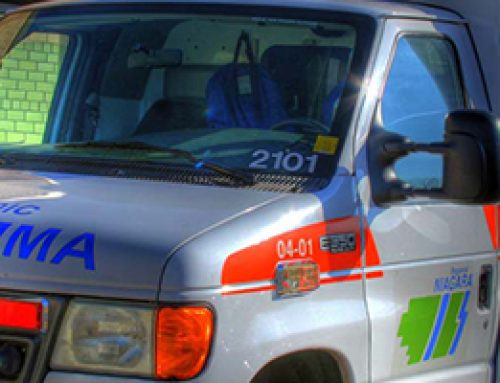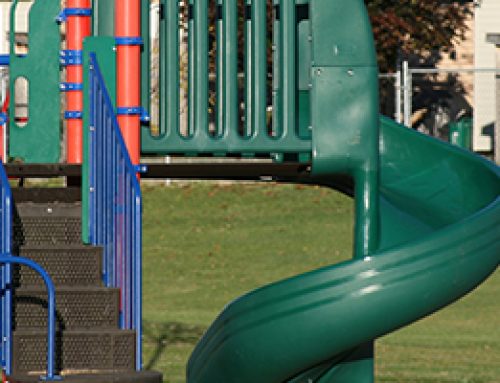Elder Financial Abuse
In 2014, the BeFAIR Project (Building an Elder Financial Abuse Intervention Response) undertook research on financial abuse of the elderly in the Niagara Region of Ontario, and developed an intervention program model to address and assist seniors who are victims of financial abuse.
A total of 1,096 stories submitted and documented incidents of elder financial abuse were gathered from various sources.
The following table provides a breakdown:
Elder Financial Abuse in Niagara – Information Gathered, 2014
| Source | Stories Submitted and Documented Incidents | |
|
Breakdown |
Total 1,096 |
|
| Stories submitted by the public (2014) |
Brochures provided (2) Toll free line (3) Website (3) |
8 |
| Niagara Region Police Services Fraud Unit(calendar year 2013 statistics) |
Fraud (195) Scan/Fraud (211) Theft (325) |
731 |
| Ontario Public Guardian and Trustee – number of cases of abuse of seniors through Power of Attorney (calendar year 2013 statistics) |
Family Member (191) Friend (72) Neighbour (29) Service Provider (5) Residence Staff (2) |
299 |
| Ontario Ministry of Health and Long Term Care – number of reported incidents of financial abuse of seniors in Niagara Region Long Term Care Facilities, from Critical Incident Reports submitted from facilities to the ministry in the HNHB LHIN(time period July 2010 to July 2013) | 12 | 12 |
| Ontario Senior Safety Line – calls from Niagara, based on percentage population of Niagara to the rest of the 905/289 area code region (July 01, 2013 to March 31, 2014) | 16 | 16 |
| Information Niagara – calls about financial abuse to 211 from January 2013 to June 2014 | 2 |
2 |
| Forms distributed to seniors’ services providers (2014) | 28 | 28 |
Source: BeFAIR Project: www.befairproject.ca
Retrieved From: http://www.niagaraknowledgeexchange.com/resources-publications/the-befair-project-research/
Information and Safety Programs in Schools and the Community
Niagara Safety Village (NSV) hosts over 7,000 students from Kindergarten to Grade 8 each year and delivers quality life-saving programming crafted in accordance with standards set by the Ontario Ministry of Education. The NSV educational facility is located on the Niagara College Campus in Welland.
NSV’s mission is to create a safe and controlled environment to provide safety education to the residents of the Niagara Region, with the priority being the school-aged children. NSV works in partnership with the Niagara Regional Police Service, Regional Fire Services, Niagara Emergency Medical Services, and Emergency Management Ontario. Instructors are professional emergency personnel who deliver dynamic life-saving lessons in both classroom and practical settings. The NSV facility ensures that students of all ages are given the opportunity to practice what they have learned in a safe, controlled environment and will therefore retain valuable lessons.
Source: Niagara Safety Village
Retrieved From: http://www.niagarasafetyvillage.com/
The NRPS School Resource Officer (SRO) Program has won awards across the province for its impact in developing relationships with students and schools. A team of 7 SROs work with schools from both the District School Board of Niagara and the Niagara Catholic District School Board.
Recently, NRPS established a chapter of the ProAction Cops & Kids program in the Niagara and this will continue to strengthen these relationships. Through the ProAction program, activities geared to teens have included an anti-bullying film competition and a diversionary weekend camp program for youth considered to be at risk.
Source: NRPS Annual Report 2013 and ProAction Kids
Retrieved From: http://www.niagarapolice.ca/en/contentresources/resources/whoweare/2013_ANNUAL_REPORT.pdf and
https://www.copsandkids.ca/news/launch-of-the-proaction-niagara-chapter
Homelessness
The Coalition to End Violence Against Women has identified that living in poverty reduces options for women fleeing domestic violence. The collaborative work of building the Niagara Region Housing and Homelessness Action Plan helped to focus the community’s common understanding that the lack of affordable and suitable housing in Niagara makes it difficult for agencies to help stabilize vulnerable clients, so that people can have the security of knowing they have suitable housing.
Niagara Region Community Services offers information about current social service use, affordable housing, transitional housing, and shelter services on the Niagara Region website, including the following December, 2013 statistics:
(Note – this information is also highlighted in the Housing and Shelter Sector of this report.)
Affordable Housing
A total of 6,016 households (10,641 individuals) are on the affordable housing wait list for Niagara as of Dec. 31, 2013 (seniors – 2,240; households with no dependents – 1,765; families – 2,011). Within the past three years, the wait list has grown by 9 per cent with the biggest increase coming from seniors and families. Wait times range from 1.25 years to almost ten years, and vary according to the location of the units and the number of selections made by the household. The current stock of over 7500 affordable housing units is not keeping pace with the growth of the wait list. Furthermore, just under half of the current affordable housing stock is between 30- and 60 years old. This means a growing amount of resources will need to be invested in maintaining the current stock and cannot be used to create new affordable housing.
Niagara Housing Waiting List, 2003 – 2013

Source: Niagara Regional Housing
Six hundred and twenty-six households were housed in 2013. Despite this the number of households currently on the waiting list for affordable housing continues to be a challenge. Since 2002 the waiting list in Niagara has increased by 42 per cent. The greatest increase started during the 2009 recession and has left a lasting impact on the affordable housing system.
Mental Health and Addictions
The COAST (Community Outreach and Support Team) is a partnership between the Niagara Regional Police Service, the Canadian Mental Health Association Niagara Branch, Niagara Health System and the Distress Centre. COAST provides mobile crisis services through support teams consisting of a mental health worker and a COAST officer. The focus is on people 16 years of age and older with serious mental illness, substance abuse problems or dealing with social issues such as homelessness, and linking them to appropriate community services.
For the year 2013, COAST teams responded to approximately 13,419 telephone calls for service across the Niagara Region, to offering support to clients. Of those COAST conducted 687 mobile visits and completed 104 mental health assessments. COAST apprehended 12 individuals as part of their interventions under the Mental Health Act of Ontario.
Note: COAST deals with persons 16 years of age or older. If the person who is suffering from a mental illness is under 16 years of age in most cases they will be forwarded to Family and Children Services of Niagara for further assistance.
Source: NRPS
Retrieved From: http://www.niagaraknowledgeexchange.com/resources-publications/niagara-regional-police-services-2013-annual-report/
In 2014, the report, Police Encounters with People in Crisis was released by the Toronto Police Service. It summarizes the findings of an independent review by the Honourable Frank Iacobucci, of the use of lethal force by the Toronto Police Service. The report has a particular focus on police encounters with persons who are or may be emotionally disturbed, mentally disturbed or cognitively impaired.
Source: Toronto Police Service
Retrieved From: http://www.niagaraknowledgeexchange.com/resources-publications/police-encounters-with-people-in-crisis/
In 2014, the Mental Health Commission of Canada released TEMPO: Police Interactions – a report towards improving interactions between police and people living with mental health problems. It focuses on police education and training, rather than on the broader systems and policies that affect interactions between police and people with mental illnesses. The emphasis is on how and what should be taught, the many developments in the field of adult education and curriculum design.
Source: Mental Health Commission of Canada
Retrieved From: http://www.niagaraknowledgeexchange.com/?s=police+interactions








